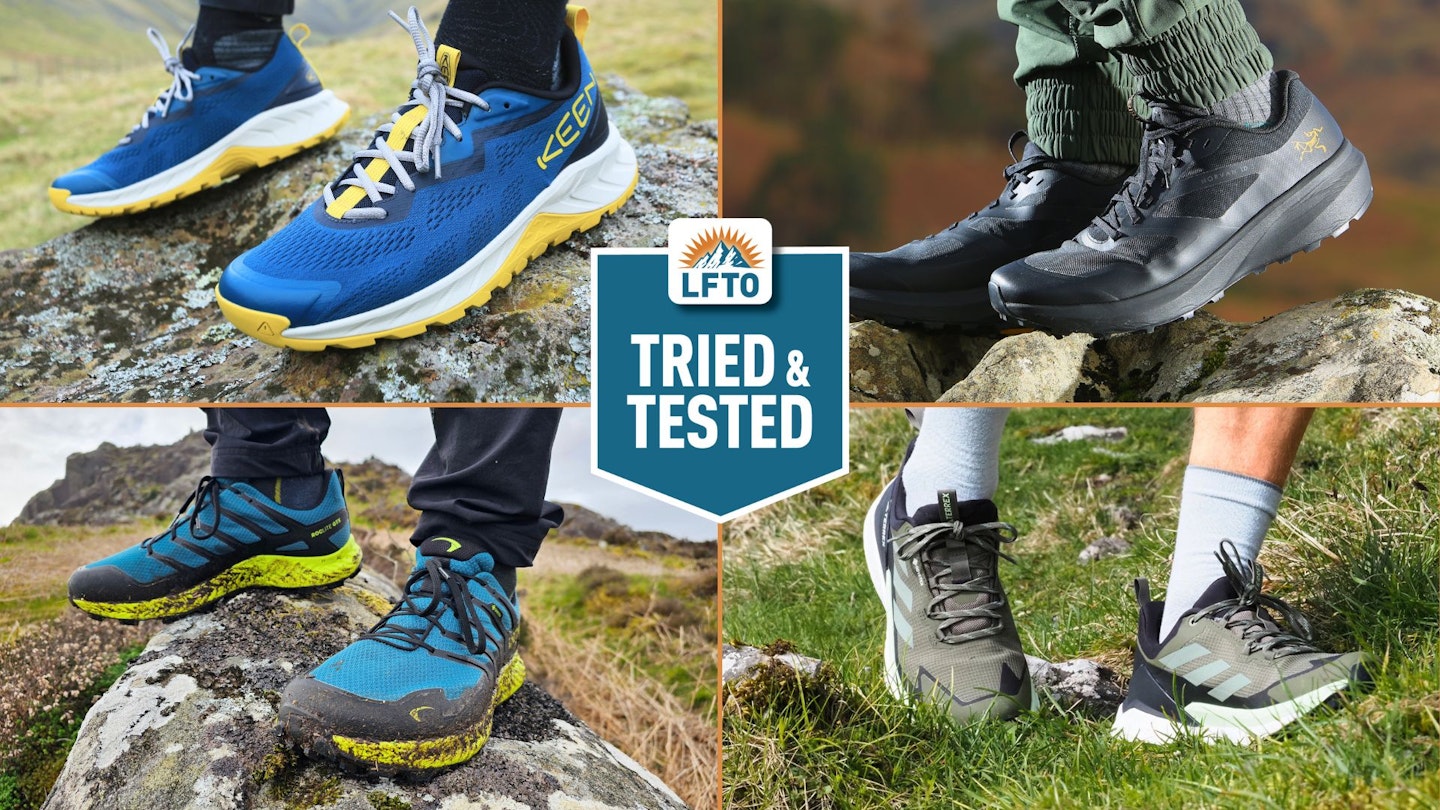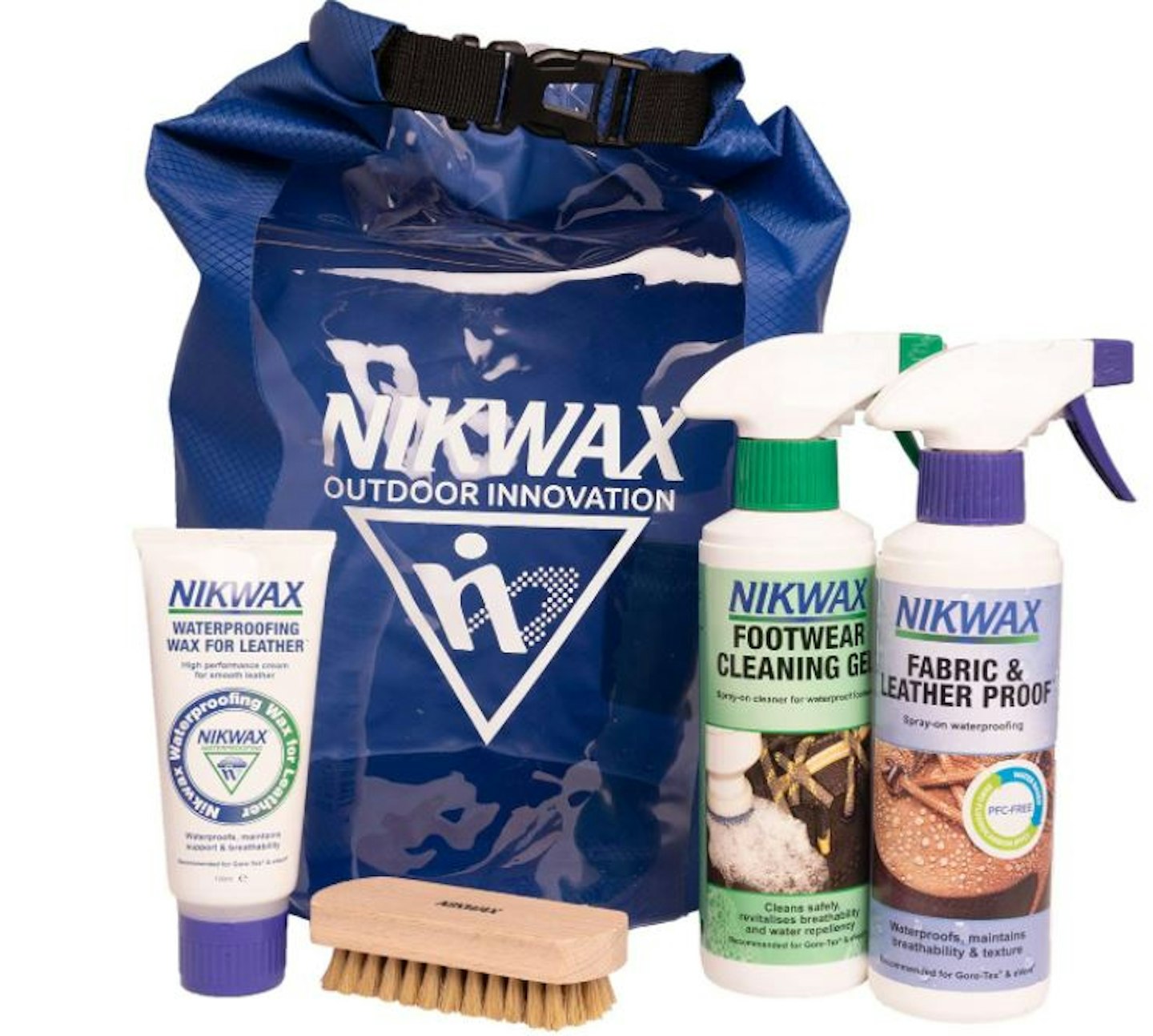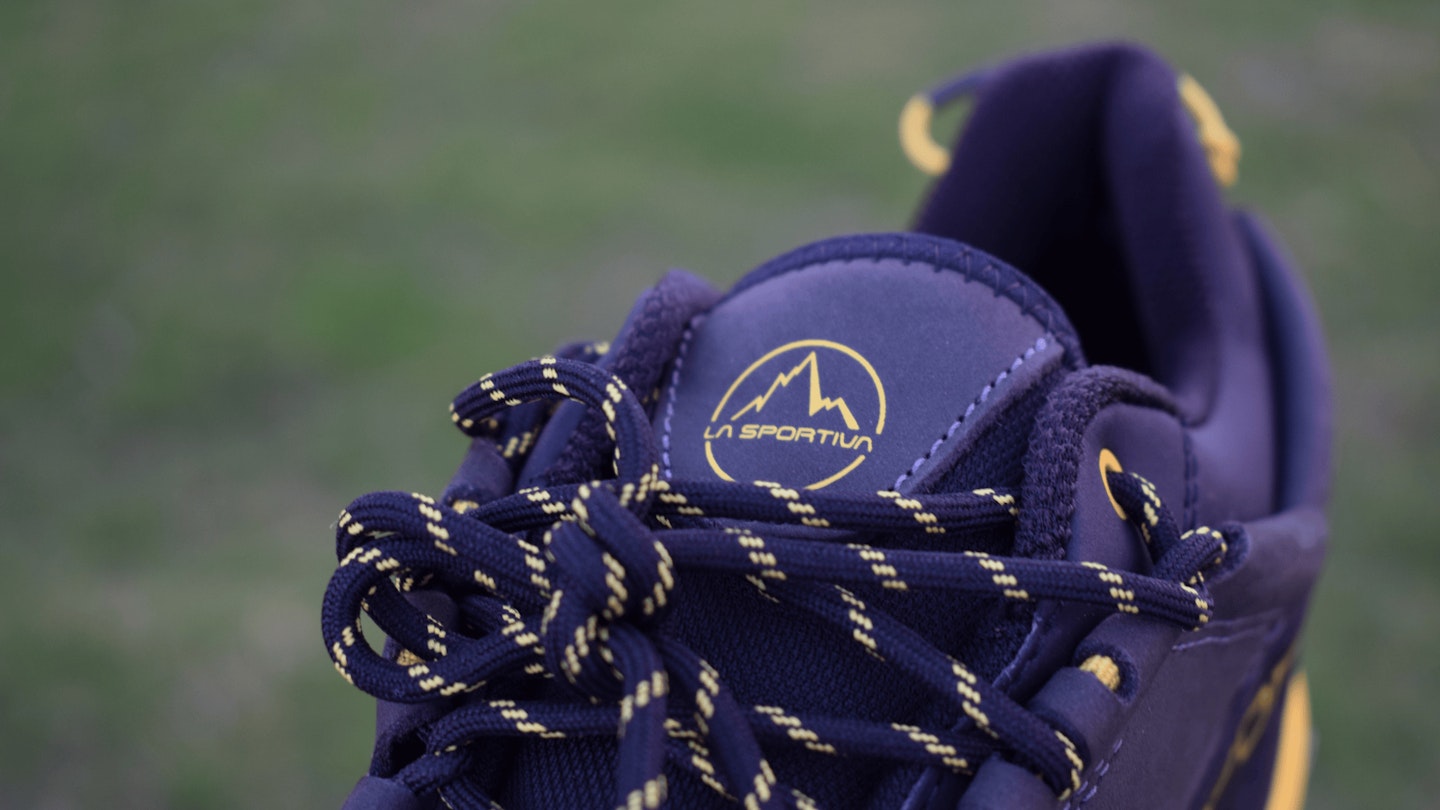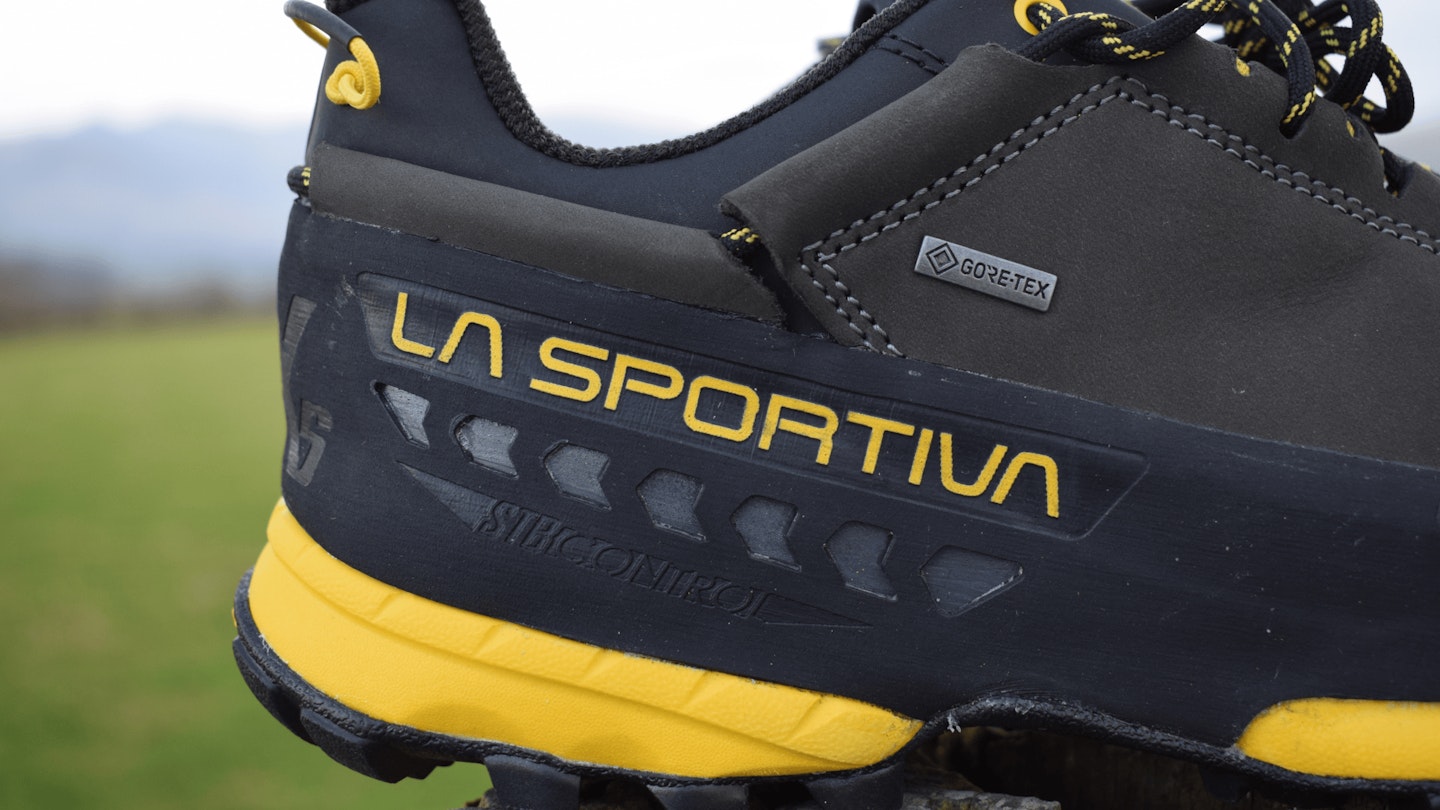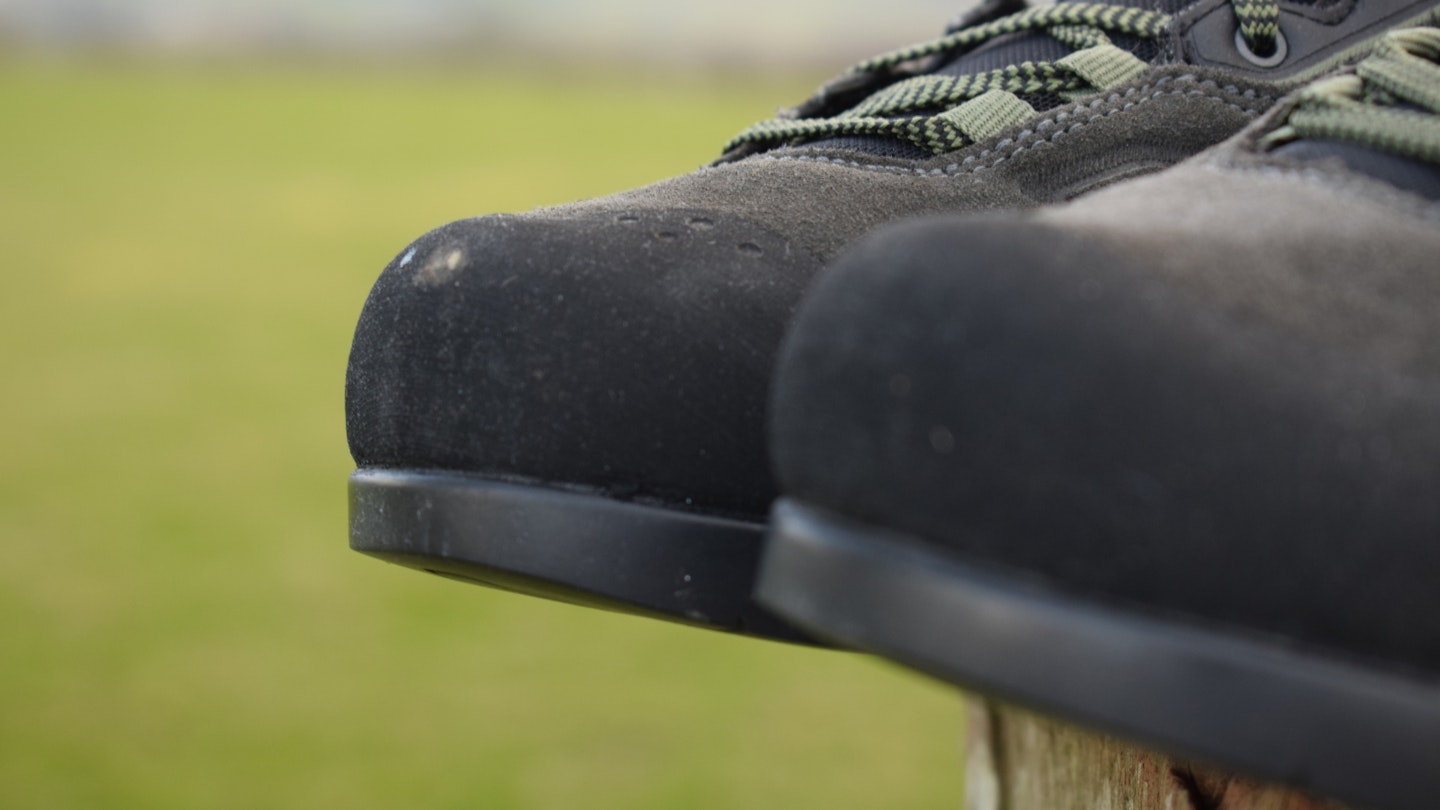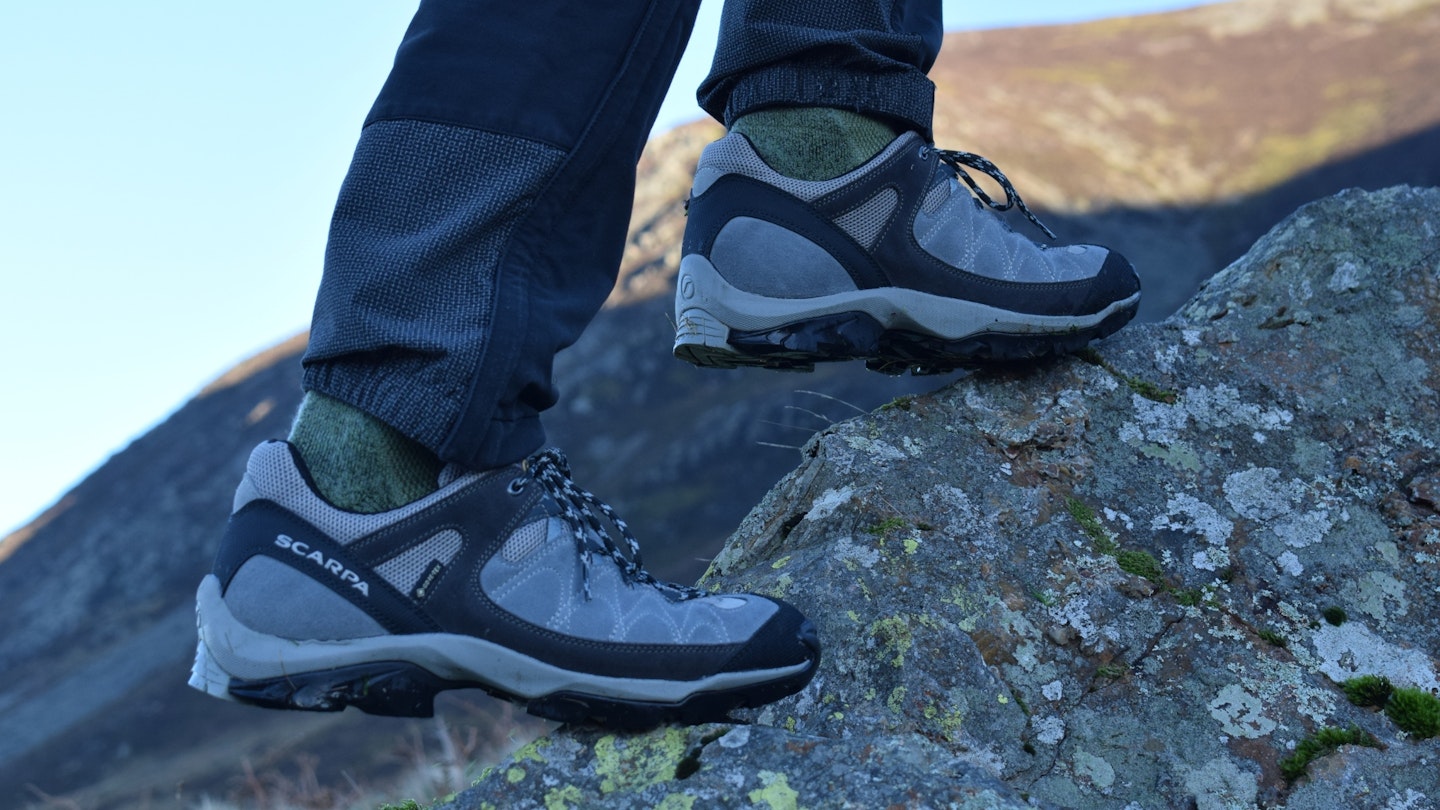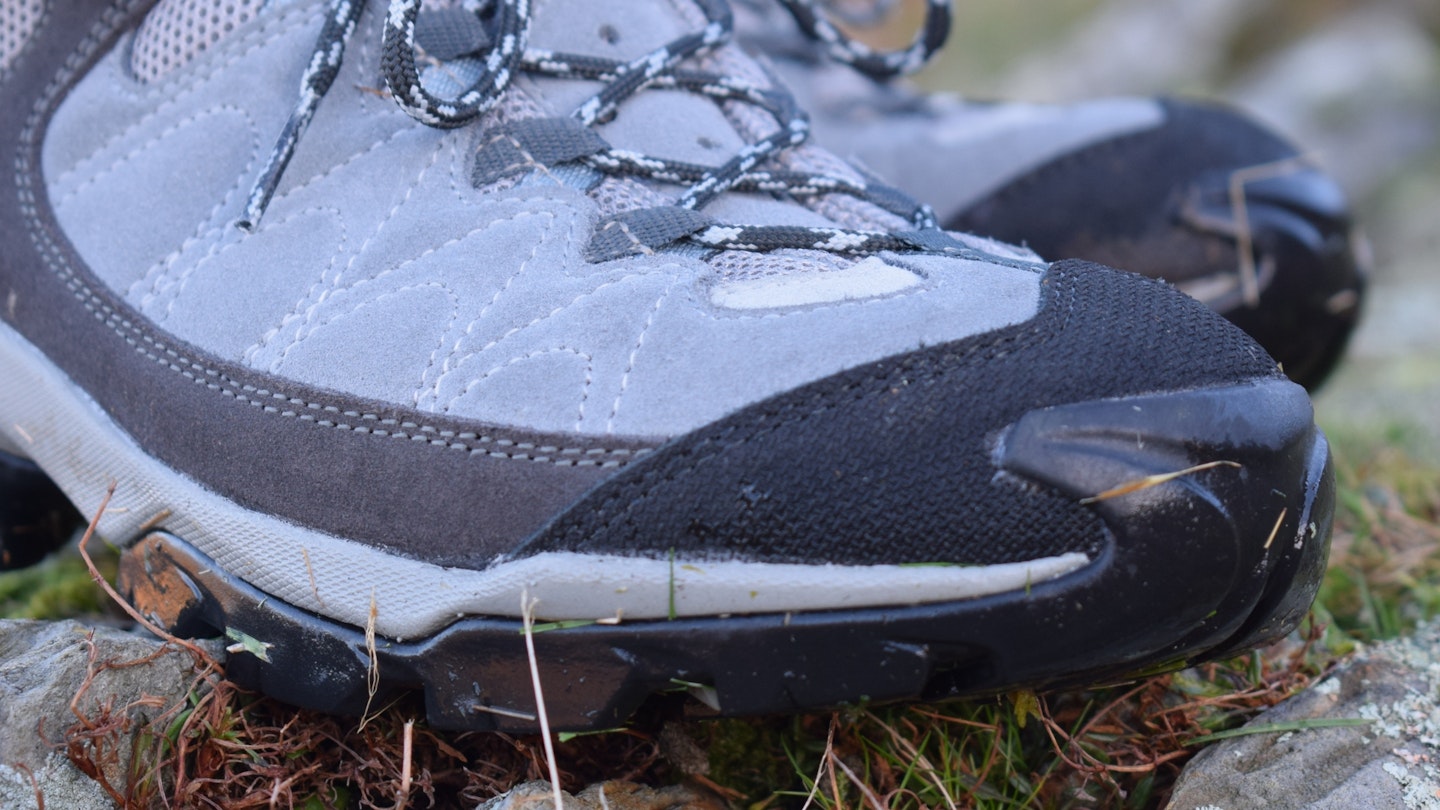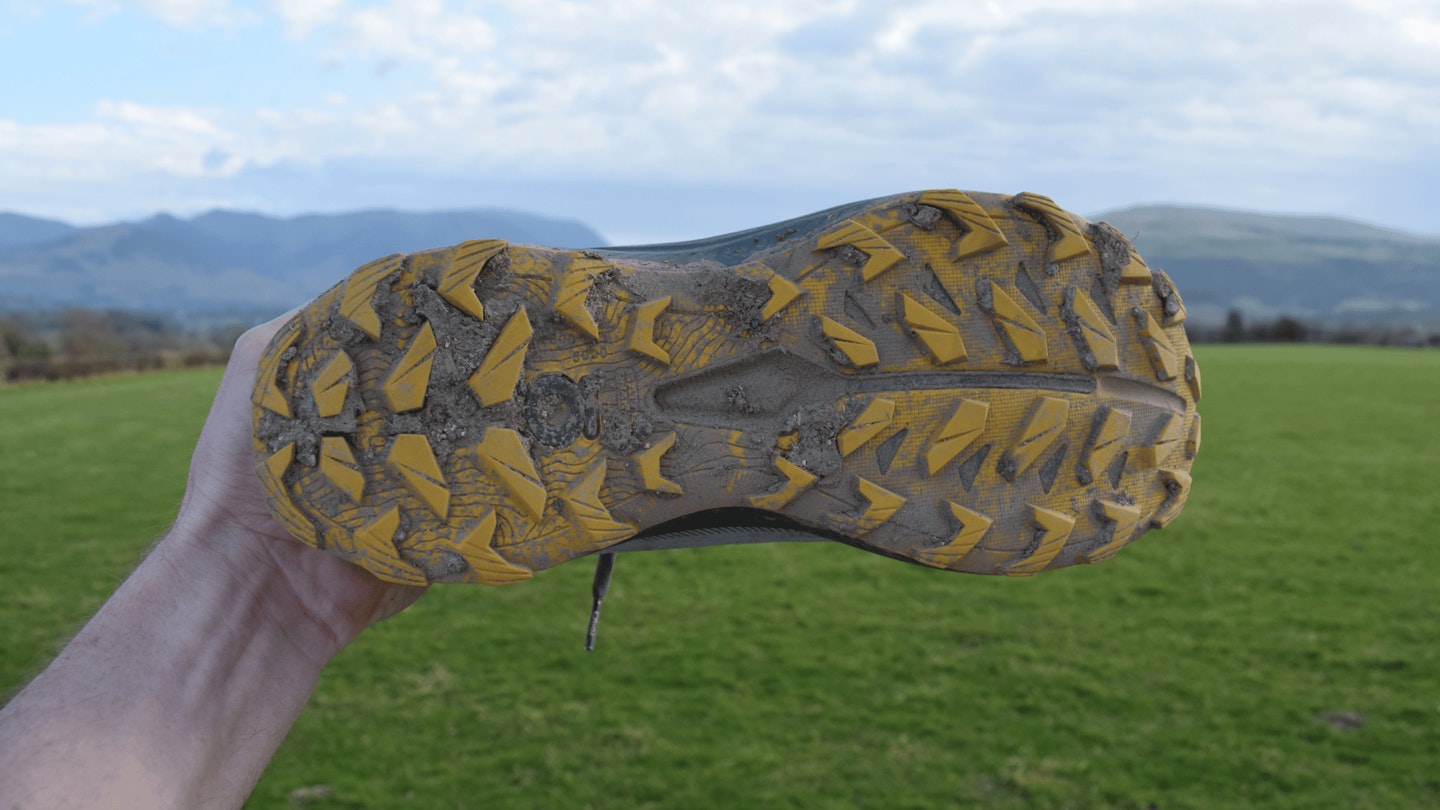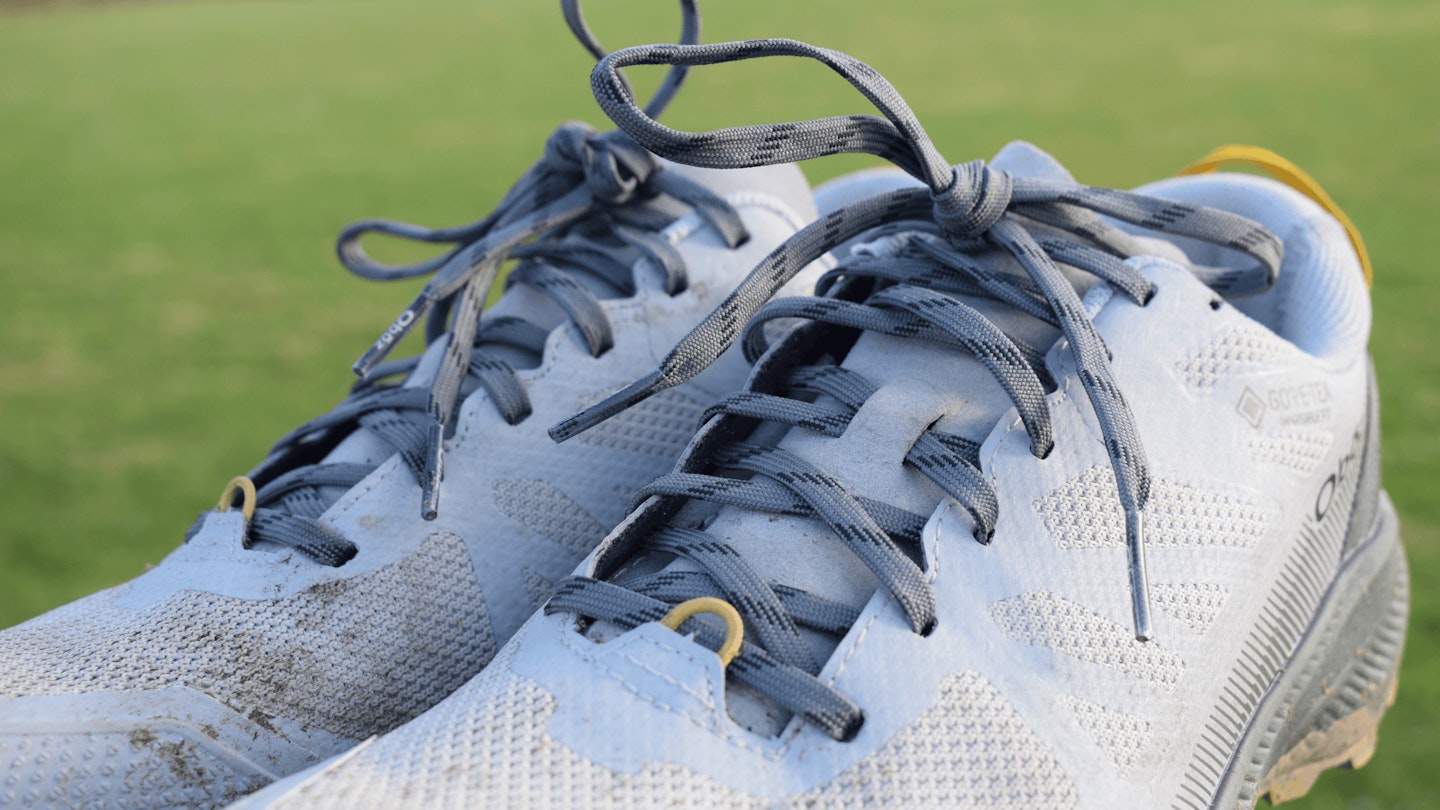Somewhat predictably, the LFTO team is pretty obsessed with all types of hiking outdoor footwear, and we wear hiking shoes a lot during the warmer months of the year or on less technical hikes on dry days.
The hiking shoes recommended here were tested by four members of our team: former Walk and Scouting magazine editor Matt Jones, experienced kit tester and long-distance hiker Ellie Clewlow, former LFTO senior staff writer Chris Williams and James Forrest, a man that's climbed every single mountain in the UK and Ireland.
When testing these hiking shoes, we paid close attention to their features, construction, comfort, performance and overall value for money. To gain a comprehensive view of their strengths and weaknesses, we tested them on different types of terrain, from steep inclines with loose gravel to boggy, almost non-existent footpaths.
Each rating criteria is ranked out of five and these are then combined to work out the overall star rating. A 5-star rating means a shoe is genuinely market-leading, 4.5 stars represent an impressive performer, while 3-4 stars means a product does the job as expected, but with a few flaws. Anything under 3 stars is best avoided.
Read how we test gear for more info on how we get products in to review.
While hiking shoes may lack the ankle support and weather protection you get from walking boots, they certainly make up for it by feeling lightweight and nimble.
They're suited to countryside walks or nice days on well-maintained trails, but the fleet footed among you may also choose them for more adventurous outings, too. With that in mind, we’ve been busy out in the hills and mountains testing this year’s best models.
Just like walking boots, hiking shoes vary a lot in terms of design and construction, from more structured shoes for those who need maximum stability and support, to super lightweight, trail running shoe-inspired footwear. But all share the intent of making you a bit swifter and more agile in the hills compared to boots.
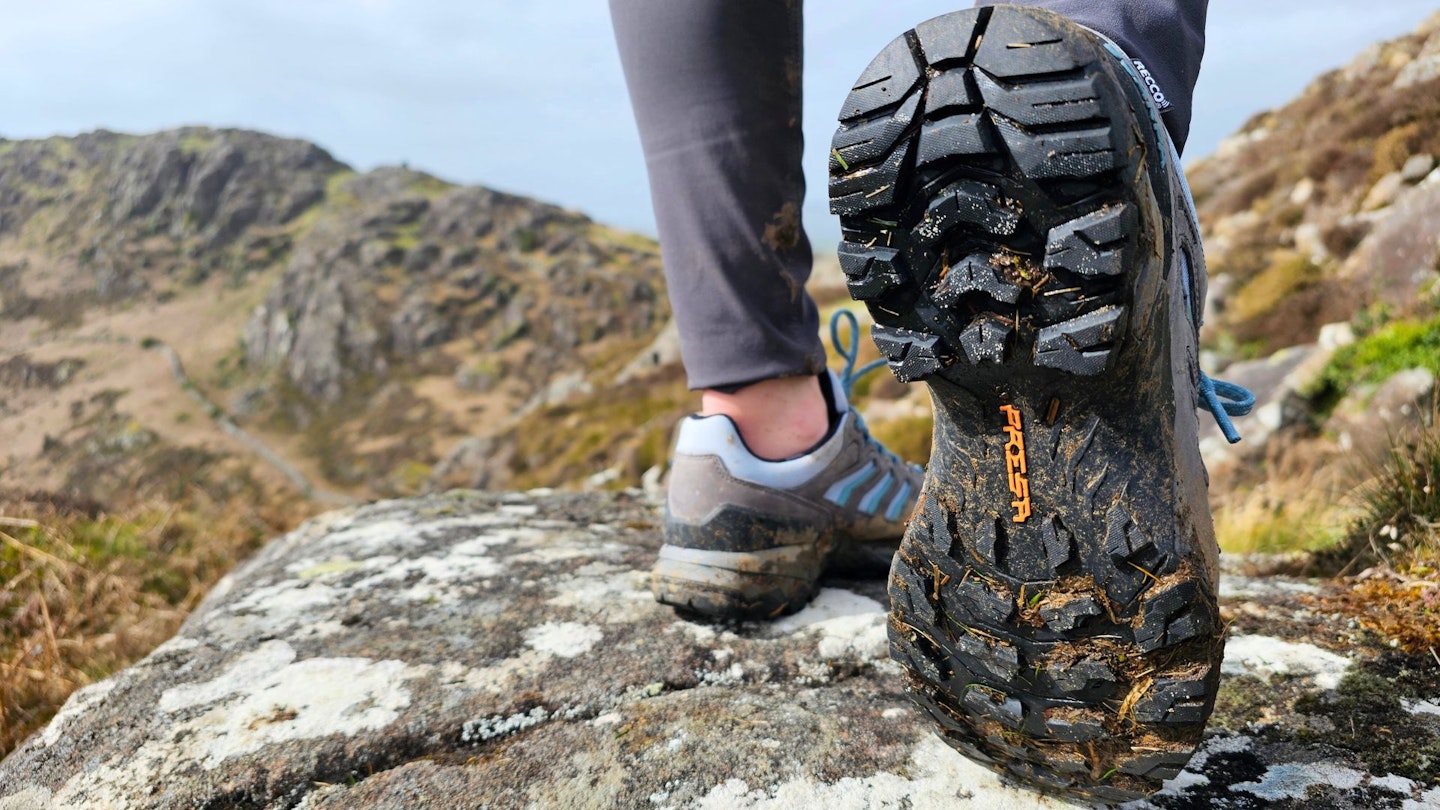
This isn’t to say that hiking shoes work for everyone. Ultimately, a lot depends on where and when you go walking. Although many modern trail hiking shoes come with waterproof Gore-Tex linings, they still don’t provide as much protection as a lined leather boot, due to their lower flood height. And others might prefer the additional ankle support and long-term durability of a high-quality pair of boots.
At LFTO, we’ve certainly embraced the trend towards trainer-style hiking shoes because it’s superb for fast days in the mountains. But we also still enjoy using more sturdy, supportive, often leather hiking shoes for longer treks and technical routes.
Best hiking shoes at a glance
Best hiking shoes overall: La Sportiva Ultra Raptor II Leather GTX
Best town-to-trail walking shoes: Adidas Terrex Free Hiker 2.0 Low GTX
Best traditional walking shoes: Hanwag Blueridge Low ES
Best value hiking shoes: Inov8 Roclite GTX
Best technical hiking shoes: La Sportiva TX5 Low GTX
Best lightweight walking shoes: Danner Trail 2650 GTX
Editor's note: This article was updated in September 2025, when we refined the list of recommendations and tweaked some of the insights into our testing.
The best hiking shoes reviewed:
Born from La Sportiva’s mountain running expertise, the Ultra Raptor II Leather GTX is a solid yet relatively low weight mountain hiking shoe. The uppers feel almost as soft and forgiving as a trainer, even though they are made from nubuck leather which brings a little more structure at the cost of some increased weight. A breathable Gore-Tex Extended Comfort liner boosts waterproof protection.
The rear of the shoe features a sculpted collar, an elevated heel section with an Achilles cutaway, and an unusual heel cage for improved stability, while the forward section has a prominent toe cap to guard against impacts.
Underfoot, you get high levels of comfort from a shock absorbing EVA midsole, which we felt was noticeably more cushioned than more minimalist trail shoes, but still offers plenty of lateral stability.
The soft and tacky Frixion Blue rubber outsole grips brilliantly on dry, rocky ground, but isn’t quite so impressive on wet or muddy terrain, probably because the 4mm sole lugs aren’t the most aggressive. It also tends to wear more quickly than harder rubber compounds despite being La Sportiva's supposedly more durable compound.
It is worth noting that the fit is relatively narrow, and although a wide version is available it seems tricky to find in the UK.
Read our full La Sportiva Ultra Raptor II Leather GTX review for more or find the women's version here.
Pros
- Lightweight
- Superb traction on rock
- Structured and supportive for a trail shoe
- Can be resoled
Cons
- Sole can wear quickly
- Narrower fit may not suit everyone (wide fit available)
| Weight (per shoe) | 420g |
| Upper | Nubuck leather w/ Gore-Tex lining |
| Sole | La Sportiva FiXion Blue w/ 4mm lugs |
| Men's sizes | EU 38 - 49.5 |
| Women's sizes | EU 36 - 43 |
On test, the Adidas Terrex Free Hiker 2.0 Low GTX was our pick for a shoe that performs best as a general-use hiker that people can wear from their doorstep to a hill summit. It's reasonable value, very comfortable, while also delivering a good level of performance, agility, and protection.
To us, one of the standout features of this shoe is its fit and comfort, securely cupping the heel and contouring the foot nicely, while also providing lots of cushioning around the ankle and underfoot.
Adidas claims the BOOST midsole on the 2.0 improves comfort and cushioning by 15% over the previous version. Is it noticeable? Not really but it's a brilliant shoe for long hikes.
Although not as durable as a leather hiking shoe, the Free Hiker 2.0 is still quite robust. The base of the upper has an abrasion-resistant coating, and at over 430g per shoe, it's a bit more heavy duty than it looks and certainly compared to other trainer-style rivals.
In terms of grip, the Continental rubber outsole delivers surprisingly decent traction on wet and dry surfaces, providing confidence on non-technical trails.
Read our full Adidas Terrex Free Hiker 2.0 Low GTX review or see the women's version here.
Pros
- Very comfortable
- Reasonably durable
- Suitable for most hiking routes
- Waterproof and non waterproof versions available
Cons
- Could have better eco credentials
| Weight (per shoe) | 439g |
| Upper | Synthetic w/ Gore-Tex lining |
| Sole | Continental rubber |
| Sizes | UK 3.5 - 14.5 |
Despite demand for outdoor footwear arguably trending away from tradtional leather walking shoes, they do have their fans and a rightful place on the store shelves because they are far more durable than the lightweight alternatives flooding the market.
German brand Hanwag is one of Europe's long-established shoemakers and has produced a superb modern iteration of the leather hiking shoe with its Blueridge Low ES. Our testing revealed it's a triumph of durability and quality blended with sustainability and innovation.
The upper is almost fully leather, with just the tongue and ankle cuff being made from recycled nylon. Every part of this shoe, including the waterproof membrane and the outsole, is Hanwag's own, which means all the components don't skimp on quality. This is a very high quality item, which, considering its pretty mid-range price tag, makes it very good value indeed.
It's not a super plush or cushioned shoe because its midsole is designed for longevity, but it's still comfy in its own right and if paired with supportive insoles, it makes for a great long-distance trekking shoe.
We were also impressed with this shoe's eco credentials. It's made in Europe and the materials are sourced in Europe also, which lowers production and shipping emissions; it's also PFC-free and the nylon it uses is recycled; you can also get this shoe resoled, which massively extends the life of the shoe and makes it very economic in the longer run.
Read our full Hanwag Blueridge Low ES review or see the women's version here.
Pros
- Durable construction
- Can be resoled
- Excellent fit
- Versatile
- Good eco credentials
- Mid height version available
Cons
- Midsole isn't very cushioned
- Swimming against the current lightweight shoe trend
| Weight (per boot) | 490g |
| Upper | Suede leather and recycled nylon w/ PFC-free Hanwag EcoShell lining |
| Sole | Hanwag Terragrip Hike Pro |
| Men's sizes | UK 6 - 13 |
| Women's sizes | UK 3.5 - 9 |
The Roclite GTX is Inov8’s latest in its run of lightweight, agile hiking shoes. Built on a completely redesigned wider fitting last compared to previous Roclite models, it mimics the natural shape of the foot with a roomy forefoot and a broad toe box with ample space for the toes to splay.
This trainer-style hiking shoe has a superlight mesh upper, overlaid with an ‘exoskeleton’-style TPU cage to provide a little structure and protection and lined with a Gore-Tex membrane. A generous toe bumper protects the front of the shoe, and a raised heel counter at the rear offers some Achilles support.
The Powerflow Pro EVA foam midsole is lightweight but responsive and is embedded with a flexible Meta-plate rock plate for underfoot protection. Sitting on top of the midsole, the Boomerang footbed is made from expanded TPU foam rubber ‘beads’ which, Inov8 claim, are designed to compress on impact and spring back, giving up to 40% greater energy rebound.
The undersole is Inov8’s Stickygrip rubber with 6mm lugs shaped like the hooves of a mountain goat. This is very much a mud and trail-orientated shoe, so there’s no climbing zone at the toe as you might find on approach-style footwear designed for steeper or more technical terrain.
Read our full Inov8 Roclite GTX review and find the women's version here.
Pros
- Ultralight
- Very comfortable
- Mega cushioned
- Solid traction
Cons
- Broad fit may be too roomy for some
- Too flexible for most technical mountain terrain
- Sole doesn't use Inov-8's graphene G-Grip
| Weight (per shoe) | 365g |
| Upper | Fabric mesh w/ Gore-Tex liner |
| Sole | Inov8 Stickygrip (6mm lugs) |
| Men's sizes | UK 6 - 14 |
| Women's sizes | UK 3 - 8.5 |
The La Sportiva TX5 Low GTX bridges hiking and approach shoes. The rubber is extremely grippy, while the outsole is semi-rigid. There's lugs for grip on hiking terrain and flatter regions for technical moves.
At 474g per shoe, it's heavier than most hiking shoes. But this is a shoe you can rely on. The La Sportiva TX5 is made from tough nubuck leather, with reinforcements at the toe and heel.
Our tester for these shoes, James Forrest, felt confident jamming his feet into cracks. He also found that the Ortholite Hybrid insole was highly shock-absorbent, making hopping from rock to rock stable and comfortable.
James found that the waterproofing of the upper works well. There's a slightly narrow fit, which helps your foot to feel secure.
All of this means that the La Sportiva TX5 may be overkill for general hiking. But it's very well-suited for scrambling and via ferrata.
Read our full La Sportiva TX5 Low GTX review or find the women's version here.
Pros
- Highly protective upper
- Superb rock grip
- Durable
- Clever lacing system
Cons
- Not as comfortable as more casual shoes
- Overkill for simpler, non-technical hikes
| RRP: | £190 |
| Women's sizes: | UK 3.5-8 |
| Men's sizes: | UK 4-12.5 |
| Weight: | 474g / 1lb per shoe (in men's size 8) |
- GORE-TEX Extended Comfort lining
- Stabilising footbed and insole in shock absorbing injected EVA with STB Control inserts
- Nubuck + rubber rand and toecap
Named after the 2650-mile Pacific Crest Trail, this versatile trail shoe from has proven to be a favourite with the LFTO team, even picking up a Gear of the Year award in 2023. In our opinion it's the best lightweight hiking shoe for spring and summer use.
The toe box and midfoot feature superlight laminated overlays to add a little more durability and protection, while the heel section includes Danner’s lightweight EXO external heel counter. Just note that the toe cap is not as burly as that found in some other hiking shoes.
Underfoot cushioning comes from an EVA midsole and a simple foam footbed. A plastic shank adds a little stiffness, reduces torsional flex, and offers some underfoot protection. The width of the forefoot adds stability and leaves plenty of room for toes to splay.
The Vibram 460 outsole has aggressively angled 4mm lugs, made from Megagrip rubber compound. We found it grips well on a multitude of surfaces, in both the wet and the dry. Only in the sloppiest mud did the sole unit start to struggle a little.
So, from performance and comfort perspectives the Trail 2650 GTX is superb. But it's main drawback is that it's expensive.
Read our full Danner Trail 2650 GTX review or check out the women's version here.
Pros
- All variants are lightweight and breathable
- Superb traction
- Stylish and streamlined
- Very comfortable
Cons
- Not the most protective
- Not the most supportive
- Not great for mud
| Weight (per shoe) | 380g |
| Upper | Fully synthetic or suede-mesh blend w/ Gore-Tex lining |
| Sole | Vibram 460 Megagrip w/ 4mm lugs |
| Men's sizes | US 7 - 14 |
| Women's sizes | US 5 - 11 |
Scarpa claims that these shoes are the “meeting point between hiking, running and climbing, taking the best from each category”. LFTO tester James Forrest broadly agrees.
The Scarpa Rapid XT GTX is great for scrambling. They're reinforced at the toe, with a Vibram MegaGrip outsole and flat climbing zones. They fit tightly around the front, enabling precise footwork. There's a TPU insert on the midsole, which improves the rigidity of the shoe.
James found that they also perform pretty well on trails. The lugs at the centre of the sole are deep and angular, like those seen on mud-gripping trail running shoes.
They're made of suede, which isn't as durable as the nubuck leather of the La Sportiva TX5 Low (above). They're not luxurious, as the cushioning is fairly thin.
James found this wasn't a major problem though: the low weight meant his feet didn't get tired. For an approach shoe, the Scarpa Rapid XT is fairly light (406g).
All in all, the Scarpa Rapid XT has the security of an approach shoe, without any of the clobber. It's an excellent choice for fast and light scrambling adventures.
Read our full Scarpa Rapid XT GTX review or find the women's version here.
Pros
- Pretty light for an approach shoe
- Good levels of protection
- Trustworthy grip on rock
Cons
- Not as rugged as some
- Low cut can let water in
- Rather pricey
| RRP: | £185 / $169 |
| Men’s sizes: | UK 6.5-13 |
| Women’s sizes: | UK 4-8 |
| Weight: | 406g / 14.3oz per shoe (men’s UK 8) |
Hikers will probably be familiar with Keen's rockstar products – its Newport sandal and Targhee boot (and shoe) – but the Versacore Speed is slightly different approach for Keen.
The trend for hiking footwear is moving in favour of a lighter, trail running-style construction and Keen is using the Versacore Speed to get in on the action. So, this is, as Keen describes, a lightweight, athletic, multitalented hiking shoe.
On test in the UK's northern national parks we found this is exactly what the Versacore Speed is. It's very lightweight, exceptionally breathable, and boy is it comfortable thanks to a reasonably plush midsole and generous Keen fit.
Although, it's not quite as wide as some of the brand's other models, we liked it better because it has a better fitting heel.
As a non-technical hiking shoe for summer, the Versacore Speed is brilliant. As is the way with all lightweight synthetic shoes, the Versacore Speed isn't a heavy duty shoe like some of the heavier leather options here, but it's well made nevertheless and very good value compared to many rivals.
Read our full Keen Versacore Speed Shoe review for more and see the women's version here.
Pros
- Amazingly comfortable fit
- Very lightweight
- Versatile
- Good value
- Highly breathable
Cons
- Not suitable for technical terrain or long treks
- Not the most durable hiking shoe
| Weight (per boot) | 330g |
| Upper | Mesh upper (available with KEEN.DRY lining) |
| Sole | KEEN.ALL-TERRAIN |
| Men's sizes | EU 39.5 - 48 |
| Women's sizes | EU 35 - 43 |
The Scarpa Moraine GTX is designed for day hikes and easier treks of varying distance and duration. They are built on Scarpa’s Activ Fit lasts, which are developed separately for men and women. They have a roomy forefoot with a broad, blunt toe box ensuring ample space for toes to splay, but feeling less precise than some trail shoes.
The upper is built from quality 1.6-1.8mm Idro oiled nubuck leather, interspersed with smaller mesh panels for additional comfort and breathability. Rubber bumpers at the heel and toe cap add protection and durability, while the waterproof lining is a PFCec-free Gore-Tex Bluesign-approved membrane.
The midsole features double density PU foam rubber with a built-up heel to increase walking comfort, plus a medial shank to add a little stiffness and stability. As a result, the shoe feels more structured than many trainer-style hiking shoes.
The outsole is made from Scarpa’s Presa Supergum compound with a hiking-focused lug arrangement designed to offer all-round performance on mixed terrain.
The widely spaced lugs clear out mud well but still grip competently on sticky mud and slick grass. A pronounced heel brake with blocky, undercut lugs provides reassuring traction when descending.
Read our full Scarpa Moraine GTX review or see the women's version here.
Pros
- Sturdy
- Durable
- Great traction
- Protective
- Can be resoled
Cons
- Slightly heavy
- Not as cushioned as some rivals
| Weight (per shoe) | 475g |
| Upper | Nubuck leather and mesh w/ bluesign-approved Gore-Tex lining |
| Sole | Scarpa Presa HK-04 w/ 5mm lugs |
| Men's sizes | EU 41 - 48 |
| Women's sizes | EU 36 - 42 |
With the Elixir series, Salomon has moved into new territory. These are plush, ultra-cushioned trainer-hikers that compete with the maximalist shoes pioneered by brands like Hoka.
That said, the Elixir Activ GTX has borrowed a few features from its running shoe stablemates: Active Chassis technology for lateral guidance, a plush midsole foam compound, and reverse camber sole geometry for comfortable strides.
The uppers are made from lightweight mesh with textile overlays and a laminated TPU layer at the heel and toe. They are lined with a Gore-Tex membrane.
The seriously chunky EVA-based midsole is made from Salomon’s Fuze Foam compound. It’s all about bounce – or ‘energy return’ – as well as elevated, lofty cushioning. The trade-off is that you lose ground feel, making it a bit tricky to tell where you’re putting your feet on more uneven terrain.
The sole unit is Salomon’s proprietary Contagrip rubber with a pattern of 4mm chevron-shaped lugs which do a decent job in terms of overall grip, though we found that they do tend to clog with mud in sloppier conditions.
Contagrip isn't as soft and sticky as some rubber compounds, which limits grip on slick rock but ensures improved durability and more consistent lifetime performance.
Read our full Salomon Elixir Activ GTX review or see the women's version here.
Pros
- Super lightweight
- Flexible
- Plush cushioning
Cons
- No ground feel
- Reverse Camber sole geometry won't suit everyone
| Weight (per shoe) | 344g |
| Upper | Mesh/textile w/ Gore-Tex lining |
| Sole | Contragrip |
| Men's sizes | UK 6.5 - 13.5 |
| Women's sizes | UK 3.5 - 9.5 |
The Scarpa Vortex XCR GTX shoes demonstrates the brand’s ability to delivery a quality product that performs to a high standard.
They’re solid and supportive, while durability also looks to be a plus point. The Vibram outsole delivers decent grip and the Gore-Tex lining offers reliable protection against moisture.
What’s more, the robust build and stiffness of the sole suggests these shoes are capable of real mountain use.
But personally, they’re not the shoe I’d be reaching for. That’s because these days I prefer to wear lightweight walking shoes or trail running shoes. Why? Well, for the added cushioning, comfort and agile ride.
The Vortex XCR GTX shoes are good, but I find them a little heavy and rigid. The comfort didn’t quite hit the level I hope for and I experienced some discomfort around the heel.
That all said, if you like the substantial support and protection that classic hiking shoes offer, then these shoes would be a good value, durable purchase that perform perfectly well.
See our full Scarpa Vortex XCR GTX review for more or check out the women's version here.
Pros
- Durable
- Supportive
- Waterproof
- Proven design
- Excellent Vibram outsole
Cons
- Too chunky
- Quite heavy
- Expensive
- Not the comfiest
| RRP: | £195 |
| Women’s sizes (UK): | 3.5-8 |
| Men’s sizes (UK): | 3.5-13 |
| Versions: | Men’s, women’s |
| Weight: | 443g / 15.6oz per shoe (men’s UK 8) |
The Salomon X Ultra 360 Edge Gore-Tex might look like a trainer, and has the comfort of one, but it's more robust.
On his test hikes, LFTO tester James Forrest found that there weren't any uncomfortable pinch points. He'd say the fit is a little narrow. While it's not mega-cushioned, the comfort levels are still high.
The waterproofing holds up in a brief shower, but James is slightly dubious about its long-term performance.
This a shoe that's designed for protection over speed. The midsole flexes slightly at the toe, but the rest of the shoe is rigid. Rather than being agile, the Salomon X Ultra is highly stable and supportive.
James finds that the outsole offers impressive grip and stability, but he wouldn't use these shoes for technical scrambling.
Overall, this is a solid all-rounder. The Salomon X Ultra lacks the cushioning and lightness for multi-day hikes, or the technicality for scrambling, but for general hillwalking it's a good choice.
Read our full Salomon X Ultra 360 Edge Gore-Tex review or find the women's version here.
Pros
- Highly comfortable
- Stable and supportive
- Protective
- Grippy outsole
- Snug
- Recycled materials
Cons
- Not the lightest
- QuickLace system may polarise opinion
- Slightly chunky
- Not the most cushioned
- Not all that technical
| RRP: | £140 / $155 |
| Men’s sizes: | UK 6.5-13.5 |
| Women’s sizes: | UK 3.5-9.5 |
| Weight: | 400g / 14oz per shoe (men’s UK 8.5) |
The Lowa Innovo GTX LO is a classic hiking shoe, which suits mountain terrain.
It's well-built, with a rigid outsole, suede upper, a reinforced toebox and a fantastically cushioned midsole.
The standout feature is the 'Monowrap' frame, which provides outstanding stability on rocky terrain. The cushioning is plush, thanks to a double-injected PU foam, which promises to be durable.
There's a specialised braking section at the heel, built for grip on loose terrain. The lugs create enough surface area for solid traction on flat slabs.
The Innova performs well on the lower scrambling grades, but it isn't tailored towards technical scrambling. It is, however, ideal for comfort and stability on long hikes.
Read our full Lowa Innovo GTX Lo review or find the women's version here.
Pros
- Highly comfortable
- Very supportive
- Mud-gripping outsole
Cons
- Pretty heavy for a shoe
- Pricier than most
- Could be more versatile
| RRP: | £170/$210 |
| Men’s Sizes: | UK 7-13 |
| Women’s Sizes: | UK 3.5-8 |
| Weight: | 490g/17oz per shoe (men’s UK 8) |
The Obōz Katabatic LT Low GTX is a hybrid hiking/running shoe, built for speed in the hills.
It looks like a trail running shoe, and is very light for a hiking shoe. James Forrest finds that it's nicely cushioned. It's not super protective, but more so than a trail running shoe.
The Katabatic LT Low is more breathable than most other options in this review. The lugs dig into boggy ground, but also grip dry rock.
For James, the standout features here are comfort and speed. The Obōz Katabatic LT Low GTX isn't a technical shoe, but it's well-suited for walking the dog, fast hiking and easier scrambling.
Read the full Obōz Katabatic LT Low GTX review or find the women's version here.
Pros
- Comfortable fit
- Grippy outsole for muddy trails
- Highly versatile design
- Made with recycled materials
Cons
- Might not be long-term durable
- Could be more protective
- More suited to casual hikers than pros
| Men's sizes: | UK 7-13 |
| Women's sizes: | UK 4-8.5 |
| Weight: | 335g per shoe / 11.8oz (with men's size 8) |
| RRP: | £150 / $170 |
- 100% recycled polyester mesh with TPU Hotmelt overlays on the upper
- Sturdy TPU reinforced toe cap
- Form hugging heel cup, sculpted mid-foot, and a generous forefoot & toe box
How to choose a pair of hiking shoes
What features should I look for?
Tongue: A padded tongue will provide improved comfort, while a gusseted or bellows tongue – which is fully attached to the uppers – will provide better protection from water and debris.
Toe bumper: A toe bumper provides additional durability and protection for the front of the foot, particularly on rocky ground.
Heel counter: This is the stiffened cup that encloses the heel, providing protection and support. A firm heel counter helps to lock the foot in place and offers additional stability.
Ankle cuff: Unlike boots, walking shoes have a low cuff around the ankle. Some will be cut a little higher than others, helping to prevent water, mud and debris from entering the shoe, but all walking shoes generally prioritise comfort and flex over ankle support and protection.

Insole: For enhanced comfort and stability, you might prefer to switch out the shoe's supplied insole for a higher quality, specialist insole instead.
Midsole: The midsole – usually made from EVA or PU foam rubber – provides cushioning and stability, and its design will affect how rigid and energetic a shoe feels underfoot. Oversized and mega-cushioned midsoles are currently popular, providing a very springy, forward-propelling sensation as you walk.
Outsole: The outsole provides traction via a tread pattern of rubber cleats and lugs. Different rubber compounds are employed – softer compounds offer better grip, but harder compounds will last longer. In general, deep and widely-spaced lugs will provide improved grip and won't get clogged with mud.
How do I clean my hiking shoes?
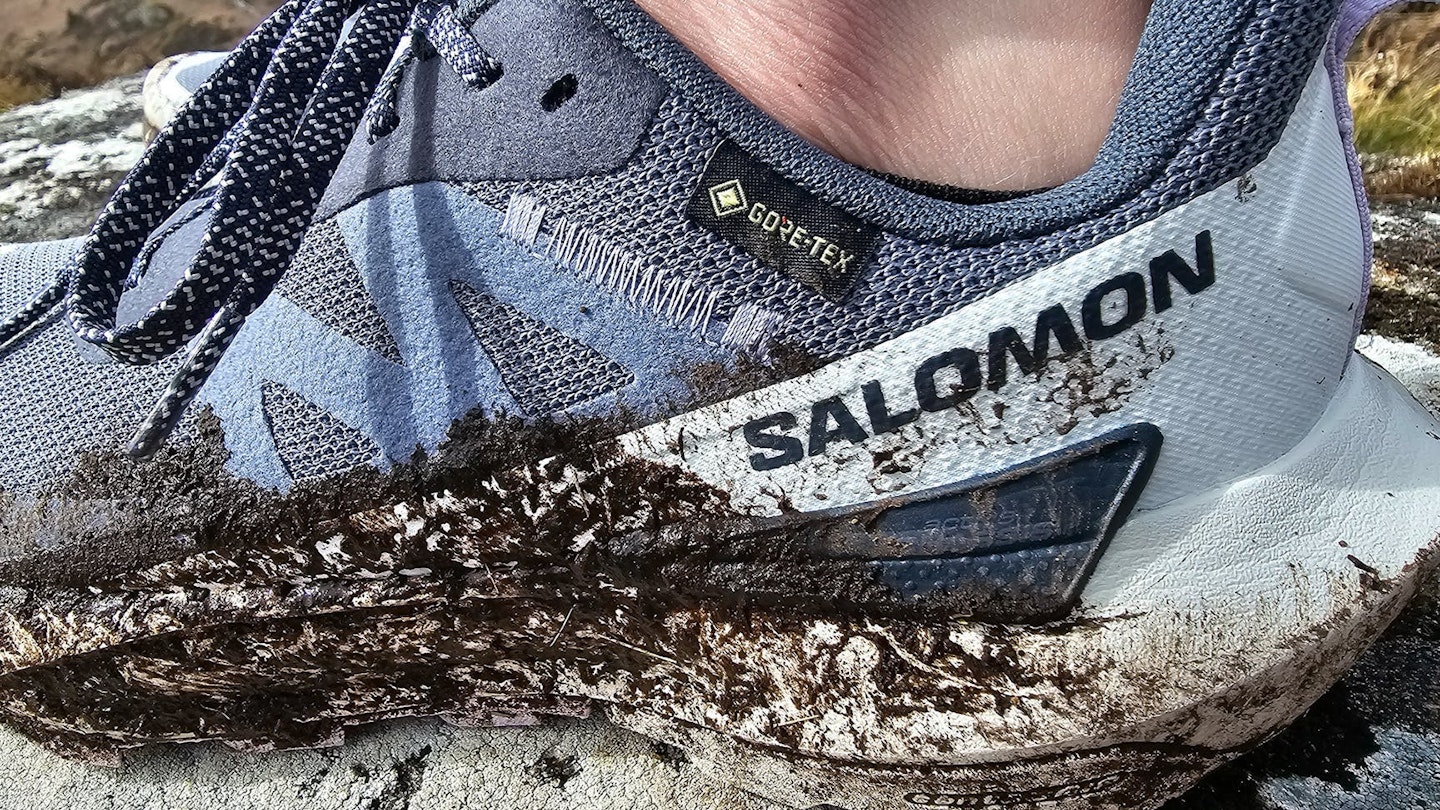
Hiking footwear get a hard life, and in order to keep your hiking footwear performing as well as they can for as long as they can, proper cleaning and care is key.
Fortunately, it's very easy. Head to our comprehensive guide to find out how to care for your hiking footwear, but it boils down to using a proper footwear and gear cleaner (we recommend either Nikwax or Grangers products).
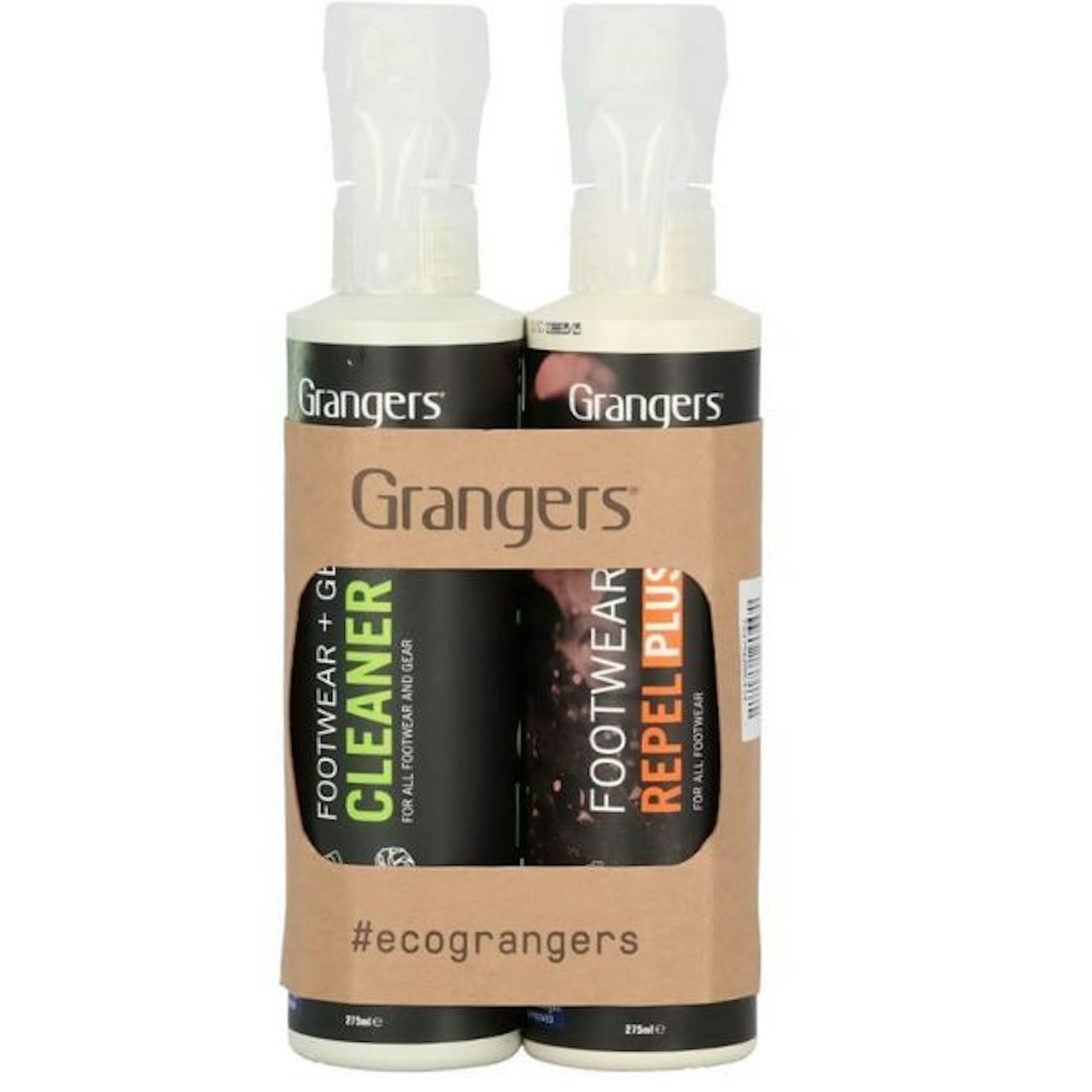
Eco-friendly, PFC-free footwear and gear spray-on spot cleaner and reproofer. These versatile sprays and can be used on almost all your gear, for those smaller stains and marks.
Leather and fabric footwear care kit including brush and dry bag. The sustainability credentials on this care kit are great, and the included dry bag becomes a big help on multi-day hikes or camping trips.
About the author
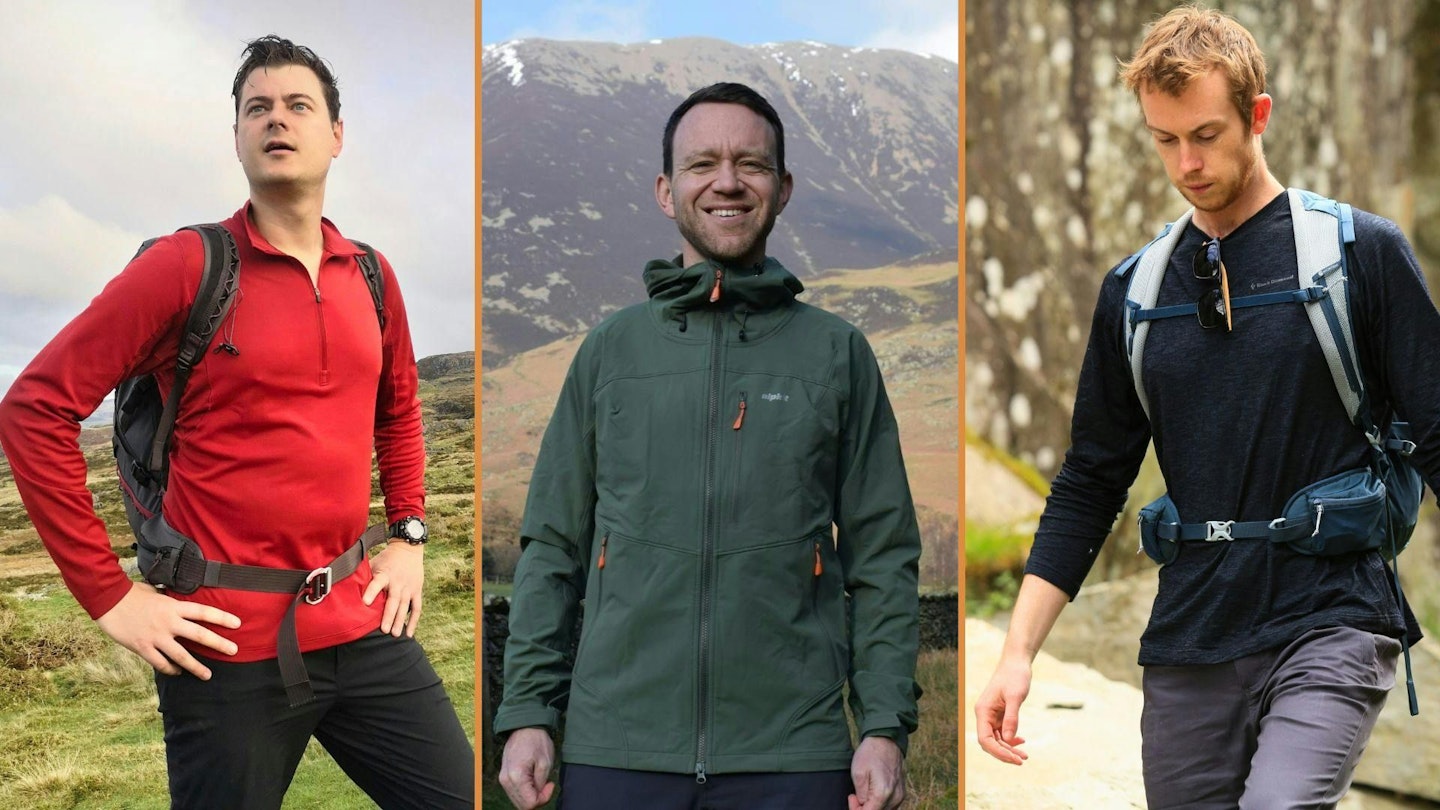
Your kit testers for these reviews were Matt Jones, James Forrest and Chris Williams, with contributions from Ellie Clewlow. Matt and Ellie are our Snowdonia-based freelance writers and reviewers who have been testing outdoor kit for years and are among the UK’s most experienced, authoritative outdoor writers.
Our next gear tester, Chris, has extensive experience hiking in some of the world’s most far-flung mountains. He's also worked in the outdoor industry for several years as a journalist. James, who wrote five of these reviews, has been writing for us for years, is based in the Lake District and has climbed every mountain in the UK and Ireland.
